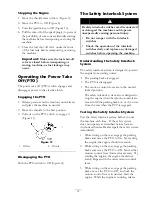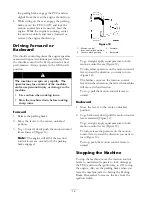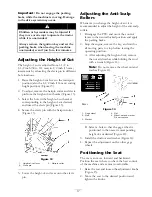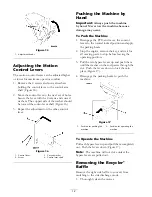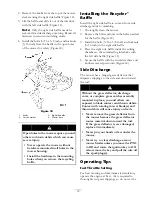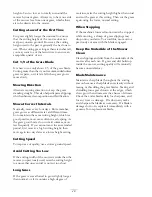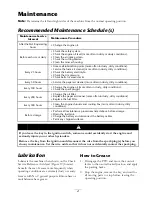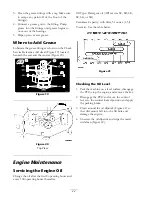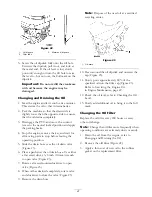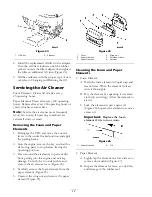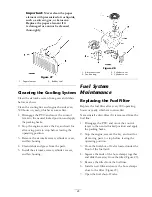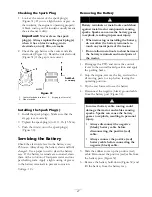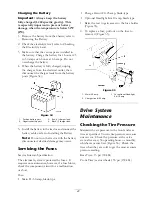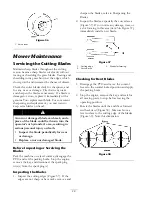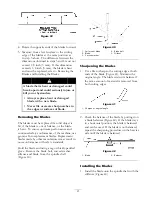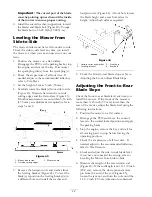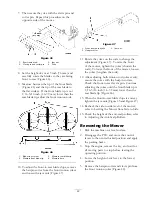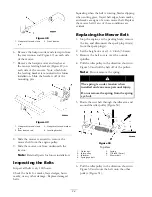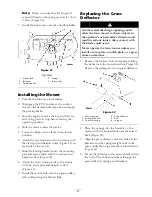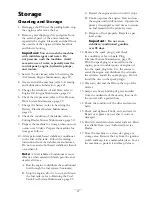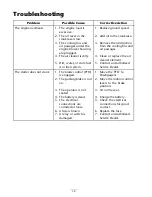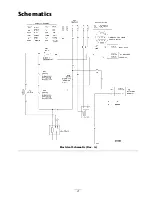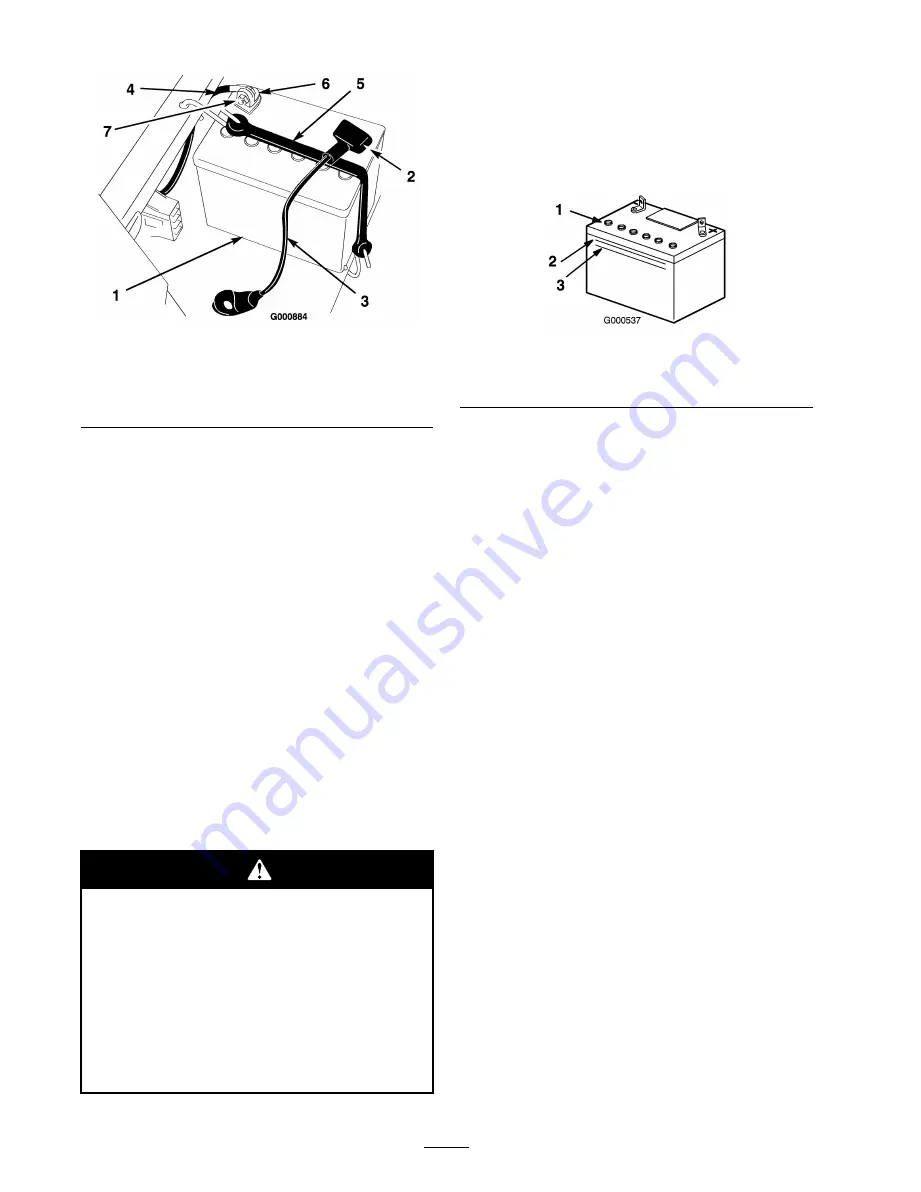
Figure 32
1. Battery
5. Battery hold-down
2. Terminal boot
6. Bolt and washer
3. Positive battery cable
7. Nut
4. Negative battery cable
Installing the Battery
1. Position the battery in the tray with the
terminal posts away from the control panel
(Figure 32).
2. Install the positive (red) battery cable to the
positive (+) battery terminal.
3. Install the negative battery cable to the negative
(-) battery terminal.
4. Secure the cables with 2 bolts (1/4 x 3/4 inch),
washers (1/4 inch), and nuts (1/4 inch)
(Figure 32).
5. Slide the red terminal boot onto the positive
(red) battery post.
6. Secure the battery with the hold-down
(Figure 32).
Checking the Electrolyte Level
Battery electrolyte contains sulfuric acid
which is a deadly poison and causes severe
burns.
•
Do not drink electrolyte and avoid
contact with skin, eyes or clothing. Wear
safety glasses to shield your eyes and
rubber gloves to protect your hands.
•
Fill the battery where clean water is
always available for flushing the skin.
1. Tip the seat forward to see the battery.
2. Look at the side of the battery. The electrolyte
must be up to the Upper line (Figure 33).
Do not allow the electrolyte to fall below the
Lower line (Figure 33).
Figure 33
1. Vent caps
3. Lower line
2. Upper line
3. If the electrolyte is low, add the required
amount of distilled water; refer to Adding
Water to the Battery.
Adding Water to the Battery
The best time to add distilled water to the battery is
just before you operate the machine. This lets the
water mix thoroughly with the electrolyte solution.
1. Remove the battery from the tractor; refer to
Removing the Battery.
Important:
Never fill the battery with
distilled water while the battery installed in
the tractor. Electrolyte could be spilled on
other parts and cause corrosion.
2. Clean the top of the battery with a paper towel.
3. Remove the vent caps from the battery
4. Slowly pour distilled water into each battery
cell until the electrolyte level is up to the Upper
line (Figure 33) on the battery case.
Important:
Do not overfill the battery
because electrolyte (sulfuric acid) can
cause severe corrosion and damage to the
chassis.
5. Wait five to ten minutes after filling the battery
cells. Add distilled water, if necessary, until
the electrolyte level is up to the Upper line
(Figure 33) on the battery case.
6. Reinstall the battery vent caps.
28
Summary of Contents for TimeCutter ZX440
Page 7: ...Slope Chart 7 ...
Page 41: ...Schematics Electrical Schematic Rev A 41 ...
Page 42: ...Notes ...
Page 43: ...Notes ...
Page 44: ......


